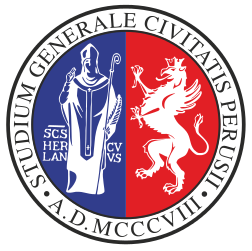LibreEOL
University of Perugia




University of Perugia




The project originates in 2000 from the results of the European project (Leonardo 2 initiative of the European Commission): 'DASP - Distance Assessment System for accreditation of competences and skills acquired trough in company Placements (1997-2000)' at the High Performance Computing Laboratory of the Department of Mathematics and Computer Science of the University of Perugia by Prof.
Osvaldo Gervasi and collaborators.
The Technical Manager since 2015 is Dr. Damiano Perri.
LibreEOL can be used for university exams (prevalent use), but also for training courses of all types to evaluate learning even in itinere (for example: before, during and after a course, to provide a quantitative data on the effectiveness of training).
The exam is accessed from a computer or tablet in a Cloud environment (Amazon ECS), therefore in a ubiquitous and highly reliable way.
The use of competence assessment tests using a web application offers the following advantages:
- neutrality of the assessment (no subjective factors are involved in the assessment)
- balance of assessment (each student receives a test of similar difficulty)
- enormous facilitation for people with cognitive disabilities (writing is very reduced, concentration facilitated)
- high capacity (a large number of tests can be carried out in the time unit in question)
- dematerialization of the examination
- fast and easy archiving and consultation of archived data
- possibility of remote testing in a controlled way, which is essential in a pandemic or in case of forced incapacity to move
LibreEOL is released under the GPL 3 license and can be downloaded from GitHub.


 |
|
| Damiano Perri | Osvaldo Gervasi |
| Technical Manager and Main Developer since 2015 |
Project Manager |
| Marco Simonetti: | Techical Support Manager (2020-2023) |
| Sergio Tasso: | Project evangelist |
| Noelia Faginas Lago: | Project evangelist |
| Antonio Laganà: | Project evangelist, adopted LibreEOL for EchemTest (ECTN) |
| Emanuele Gragnoli: | Activation of Echemtest tests and migration from QuestionMark Perception Payware |
| Luca Caprini: | Re-engineering of the platform. GitHub activation |
| Donatella Ermini: | Migration to Firebird |
| Leonardo Angelini: | First version of LibreEOL, based on MySQL |
| Agnese Beatrici: | First version of LibreEOL, based on MySQL |
| Federico Giorgetti: | Main developer of the DASP project |
| Massimiliano Baglioni | (2023) |
| Francesco Brufani | (2023) |
| Paolo Bitini | (2022) |
| Jacopo Marcucci | (2021) |
| Andrea Bartoccini | (2021) |
| Damiano Perri | (2015-2016) |
| Tommaso Giorni | (2015-2016) |
| Riccardo Gai | (2015-2016) |
| Alessandro Moretti | (2015-2016) |
| Manuel Apolloni | (2015-2016) |
| Alberto Presenti | (2014-2015) |
| Giovanni Marsiglietti | (2014-2015) |
| Luciano Corbo | (2014-2015) |
| Michele Pagliaccia | (2014-2015) |
| Catana Elia | (2014-2015) |
| Diego Bianchi | (2014-2015) |
| Matteo Botticchia | (2013-2014) |
| Matteo Battistelli | (2012-2013) |
| Bosi Elia | (2011-2012) |
| Nicolò Pierotti | (2008-2009) |
| Luca Becchetti | (2008-2009) |
| Oliver Sorbi | (2005-2006) |